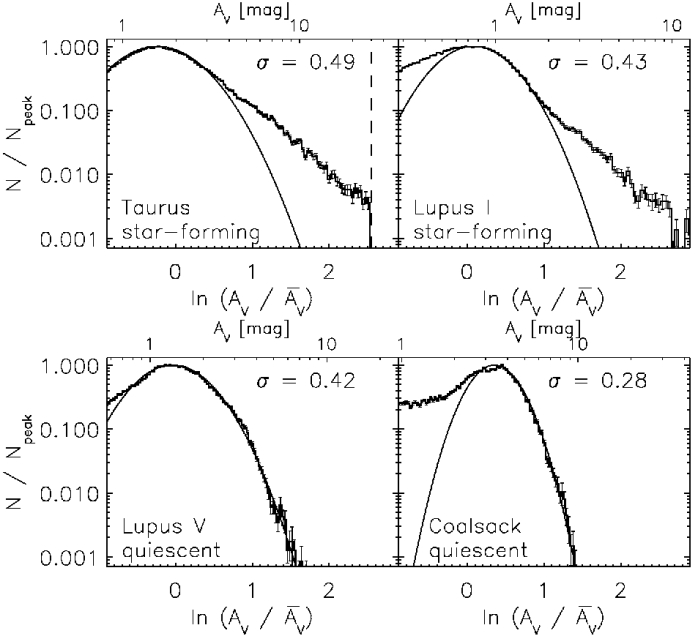| EPoS Contribution |
|
Probing the evolution of molecular cloud structure using dust column density data
Jouni Kainulainen Max-Planck-Institut für Astronomie, Heidelberg, Germany | |
| We examine the structural evolution of molecular clouds using large-scale dust column density maps derived for a complete sample of nearby molecular clouds. The maps are derived using a near-infrared dust extinction mapping technique together with data from the 2MASS archive, and they provide a unique collection of column density data that spans spatial scales from dense cores to extended cloud complexes. Using these data, we in particular demonstrate that the probability distributions of column densities commonly deviate from a log-normal shape in molecular clouds, a form that is canonically predicted by numerical simulations and assumed in analytic theories of star formation. Furthermore, we identify an evolutionary trend among the probability distributions, showing how the cloud structure evolves in transition from quiescence to active star formation. We also connect these observations to recent numerical simulations of supersonically driven, self-gravitating turbulent media. Through such comparison, we discuss about the constraints the observations introduce to the role of turbulence in the clouds and to the current theories of star formation. | |
 | |
| Caption: Probability distributions of column densities for two star-forming clouds and two quiescent clouds. While the probability distributions of star-forming clouds deviate from a log-normal shape at high column density side, the distributions of quiescent clouds closely follow log-normal functions. The deviation from a log-normal shape occurs at relatively low column densities, typically at about N=3x10^{21}/cm^2. | |
| Collaborators: H. Beuther, MPIA, Germany T. Henning, MPIA, Germany R. Plume, Univ. Calgary, Canada |
Key publication
Suggested Session: Molecular Clouds, Turbulence |

